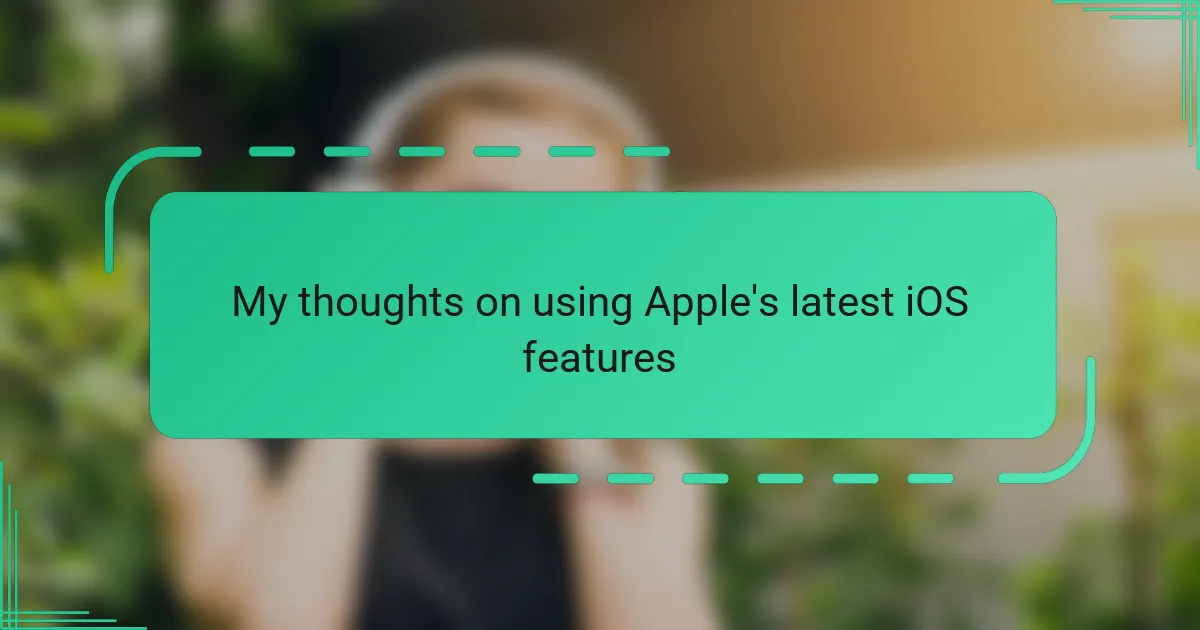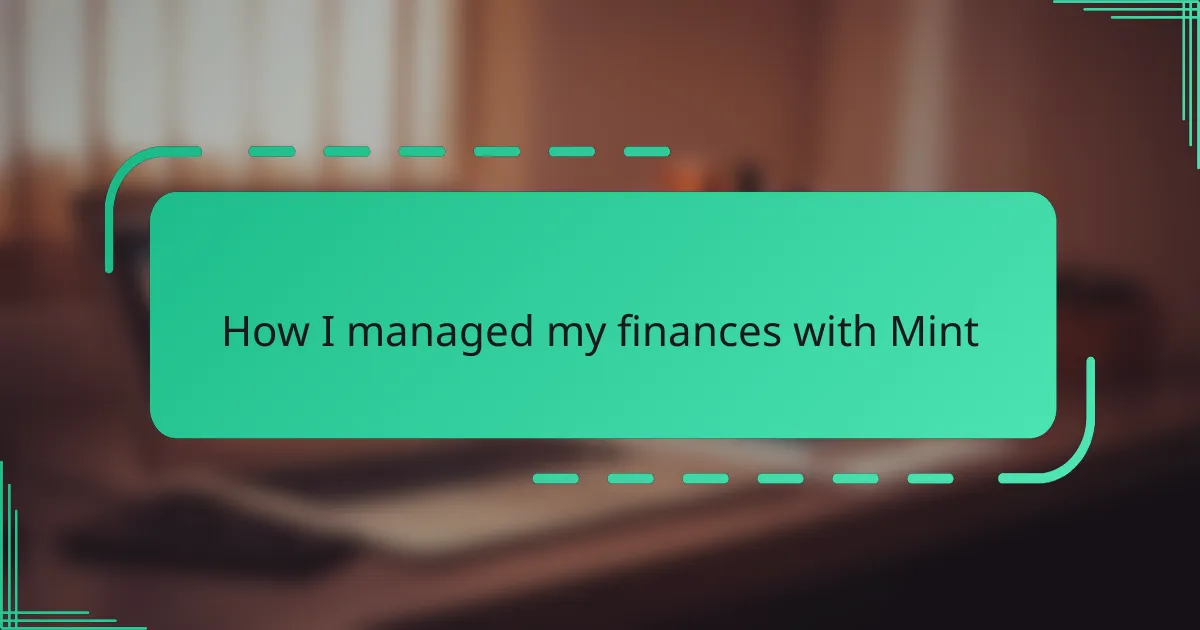Key takeaways
- LinkedIn serves as a professional networking platform, combining elements of a digital resume and social engagement.
- Personalizing connection requests and engaging meaningfully with content fosters authentic relationships and enhances visibility.
- Crafting an effective profile with a professional photo and a compelling headline attracts attention and showcases expertise.
- Quality of interactions on LinkedIn is more valuable than the quantity of connections, emphasizing meaningful engagement over mere networking.
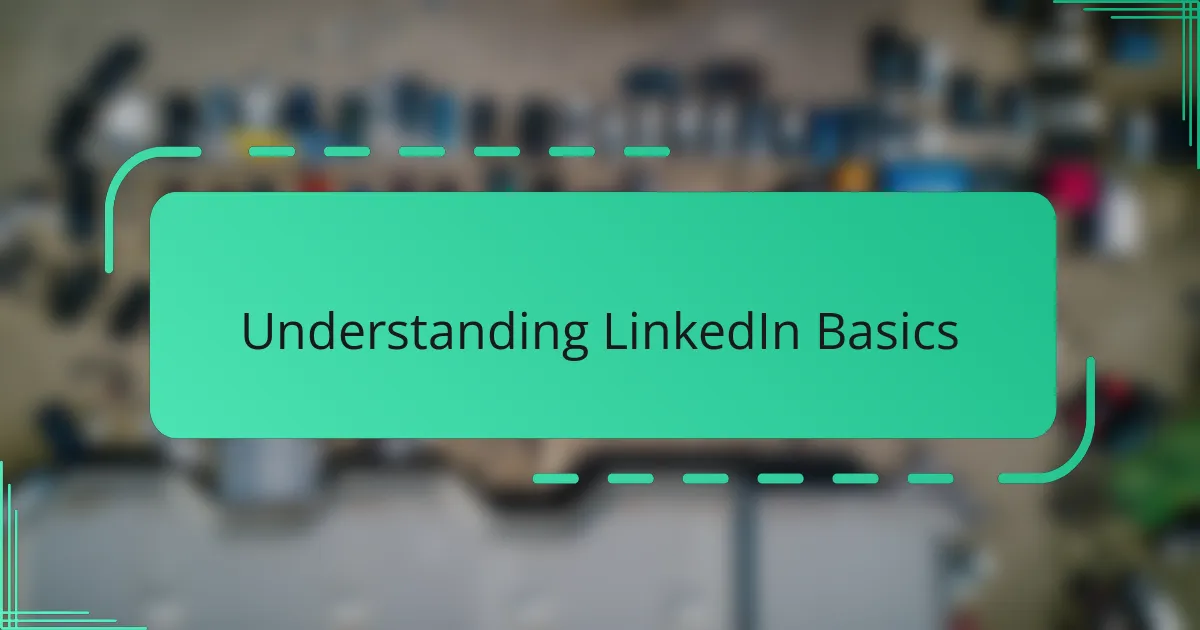
Understanding LinkedIn Basics
When I first joined LinkedIn, I was surprised by how different it felt from other social platforms. It’s not just about sharing updates or photos; it’s a professional hub where every detail—from your profile photo to your headline—matters in building credibility. Have you ever wondered why some profiles immediately grab your attention? For me, it’s all about clarity and relevance.
LinkedIn’s core is pretty straightforward: a digital resume meets a networking event. You create a profile that highlights your experience, skills, and accomplishments, then connect with people in your industry or areas of interest. But what’s interesting is how it also encourages you to engage—commenting on posts or sharing insights—to build authentic relationships rather than just accumulating contacts.
One thing I’ve learned is that understanding these basics helps demystify the platform’s purpose. Instead of seeing LinkedIn as just another social site, I view it as a powerful professional tool—if you take the time to learn its features and personalize your approach. Doesn’t that make you think about the potential connections you could be missing out on?
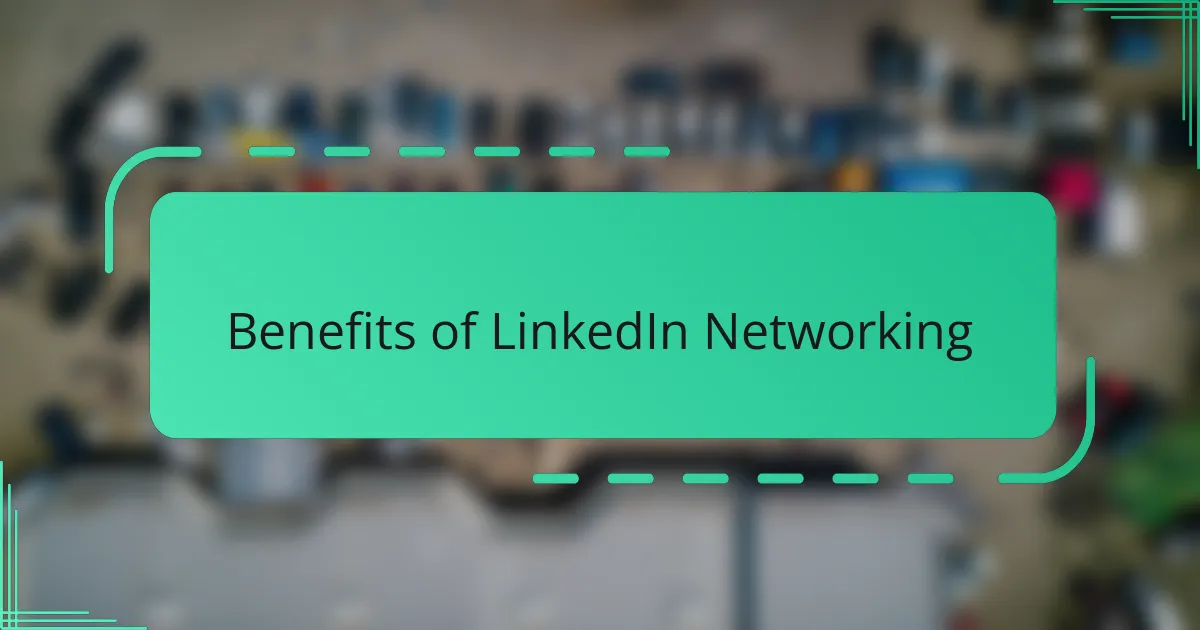
Benefits of LinkedIn Networking
One of the biggest benefits I’ve experienced with LinkedIn networking is how it opens doors to opportunities I wouldn’t have known about otherwise. Have you ever missed out on a job or a collaboration just because you weren’t in the right circle? LinkedIn helps bridge that gap by connecting you directly to the right people and companies.
What I find really valuable is how LinkedIn profiles serve as living portfolios. Unlike a traditional resume, you can continuously update your achievements and showcase recommendations. This makes it easier for others to see your expertise at a glance—which often leads to meaningful conversations and, eventually, strong professional relationships.
Another advantage that stands out to me is the ability to engage in industry discussions without geographical limits. I’ve joined groups and commented on posts that sparked ideas and even friendships with professionals from around the world. Isn’t it amazing how a simple platform can expand your network beyond your immediate environment?
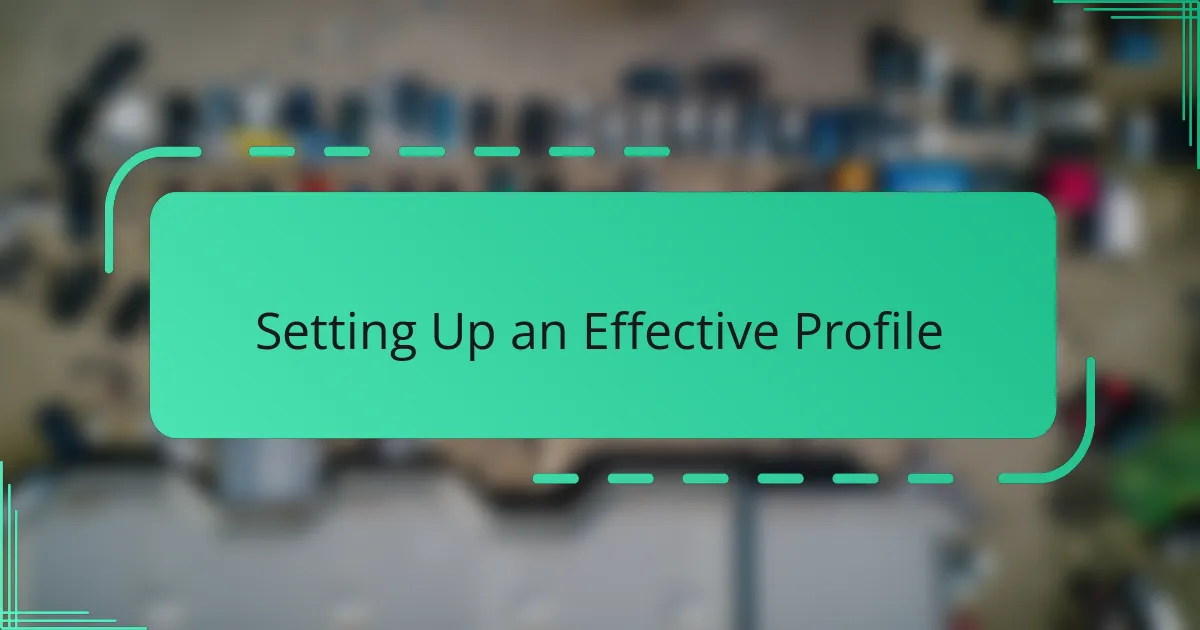
Setting Up an Effective Profile
When I set up my LinkedIn profile, I quickly realized that a clear, professional photo was non-negotiable. It’s the first impression people get, and trust me, a blurry selfie just doesn’t cut it. Have you ever judged a profile just by the picture? I have, and I bet you’re not alone.
Crafting the headline took me some thought—I wanted it to be more than just a job title. I went for something that showed my passion and what I bring to the table. That little bit of creativity really makes your profile pop in search results and invites people to learn more about you.
Then there’s the summary section, which I treated like a personal story rather than a boring list of duties. Sharing why I do what I do helped potential connections see me as a real person, not just another name. Don’t you think this is where you get to show the human side of your professional life?
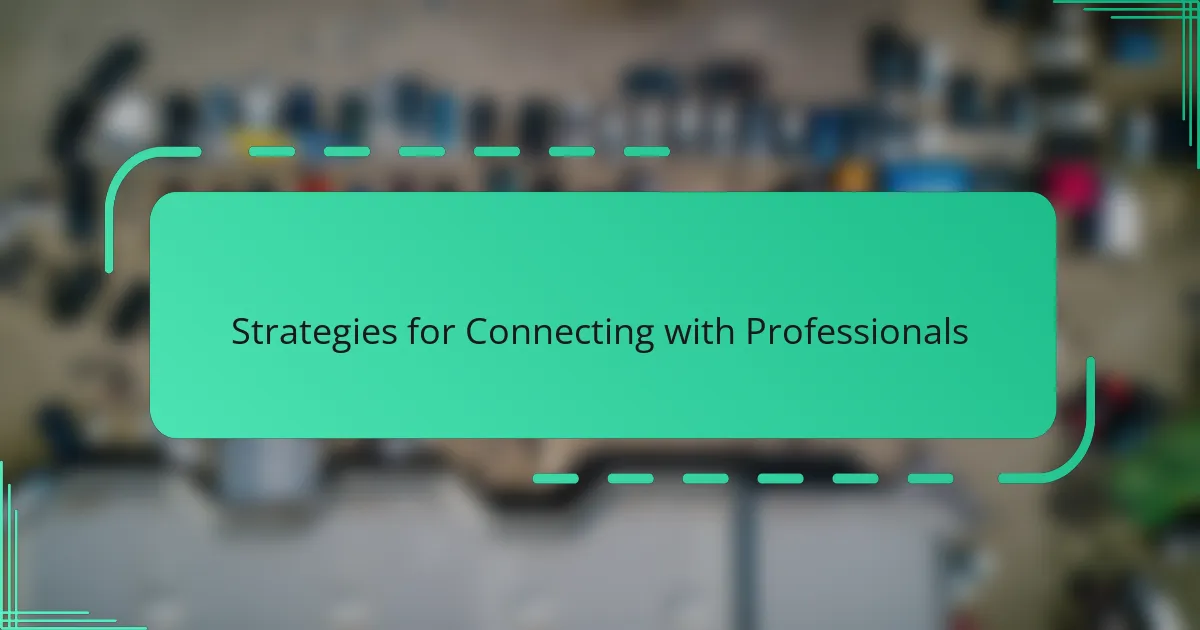
Strategies for Connecting with Professionals
One strategy I found effective is to personalize every connection request. Instead of sending a generic invite, I take a moment to mention why I’m interested in connecting, whether it’s shared interests or mutual connections. Have you ever ignored a bland invite? I know I have, so making it personal really makes a difference.
Engaging with professionals before reaching out also works wonders. I try to comment thoughtfully on their posts or congratulate them on achievements. This way, when I send a connection request, it doesn’t feel out of the blue—it feels like a natural extension of a conversation. It’s a small effort that shows genuine interest and builds trust.
Another approach I sometimes use is joining relevant LinkedIn groups and participating actively there. It’s a low-pressure way to meet people who share your professional passions. Plus, you get to learn from different voices, which often leads to meaningful connections. Have you tried networking within a virtual community? It’s surprisingly rewarding.
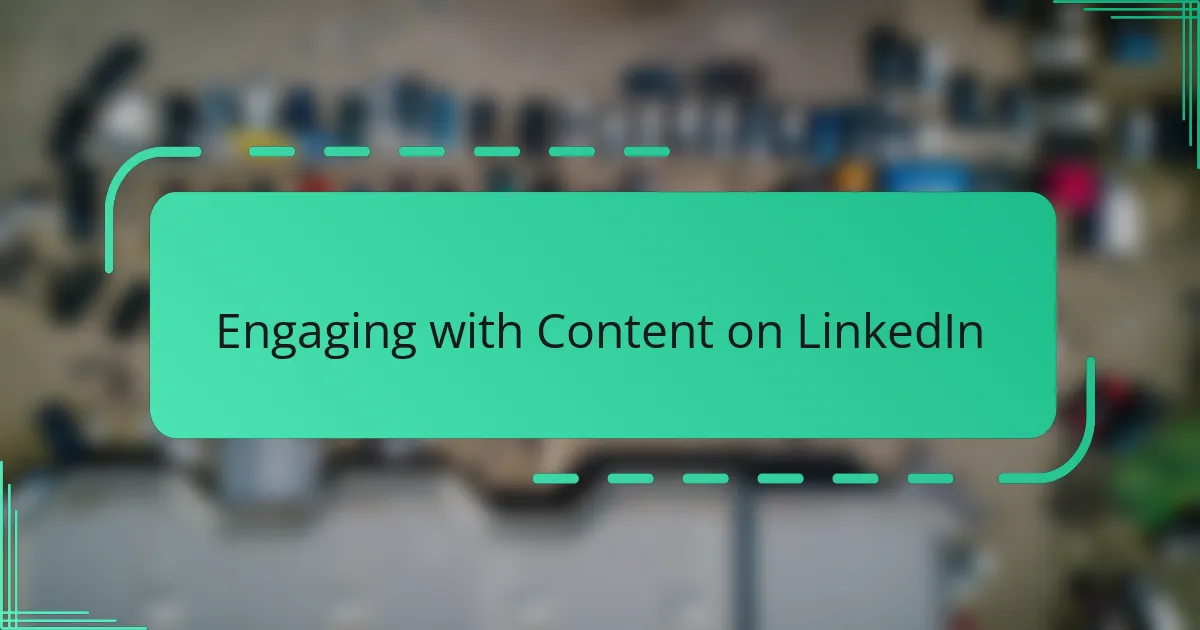
Engaging with Content on LinkedIn
Engaging with content on LinkedIn has been a game-changer for me in terms of visibility and connection. When I genuinely comment on a post or share an insightful article, it’s not just about being seen—it’s about starting conversations that matter. Have you ever noticed how a simple, thoughtful comment can spark a meaningful exchange that goes beyond the platform?
I’ve found that regularly engaging keeps me on the radar of my network without being pushy. Liking and sharing industry-relevant content feels natural, especially when it’s something I truly believe in or find useful. It’s like contributing to a professional conversation where everyone benefits, and that shared value often leads to closer connections.
Sometimes, I hesitate to comment because I wonder if my opinion will add anything new. But over time, I realized that authenticity and curiosity matter more than perfection. What’s your take on this? From my experience, being genuine and asking questions in response to others’ content invites engagement and builds trust far better than generic remarks ever could.
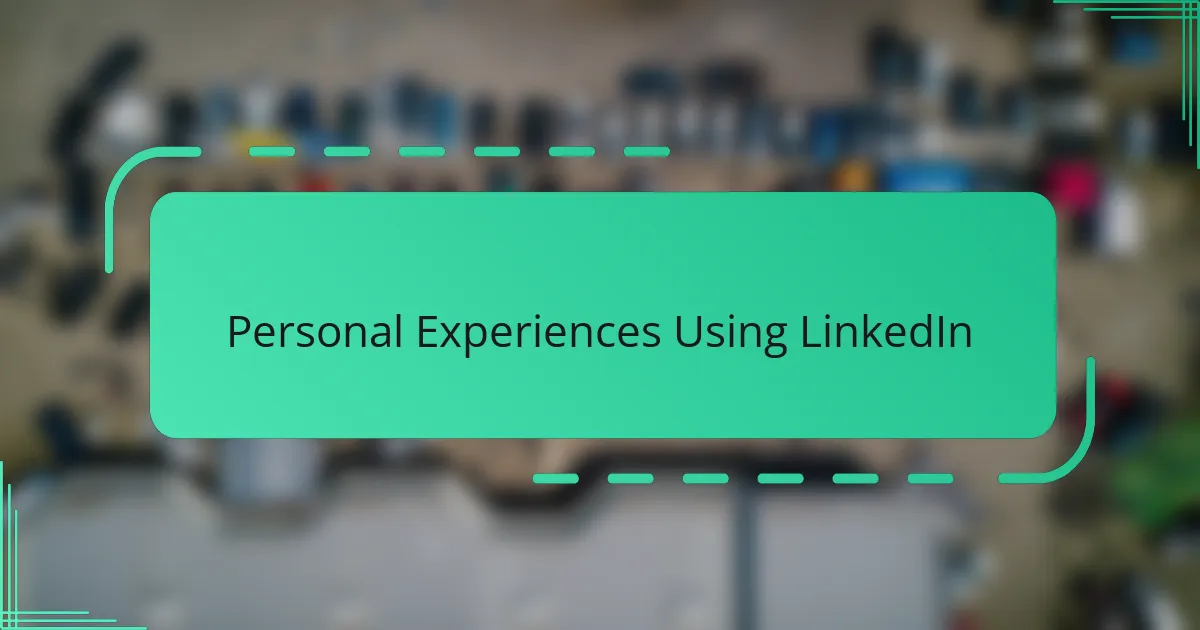
Personal Experiences Using LinkedIn
In my early days on LinkedIn, I was hesitant to reach out, feeling unsure if my messages would be welcomed. But I soon discovered that many professionals appreciated a genuine, well-intentioned note. Have you ever felt that mix of excitement and anxiety before hitting “send”? For me, overcoming that fear was a turning point in building meaningful connections.
I recall one unexpected conversation that started from a simple comment on a post about emerging tech trends. What began as a casual exchange grew into a mentorship opportunity that I hadn’t imagined when I first logged in. Isn’t it fascinating how small interactions can lead to significant professional growth?
Sometimes, I noticed that despite having numerous connections, the quality of interaction mattered most. It’s not about the number of contacts but the depth of engagement that truly enriches your network. Have you found that to be true in your experience as well? I certainly have, and that realization reshaped how I use LinkedIn every day.

